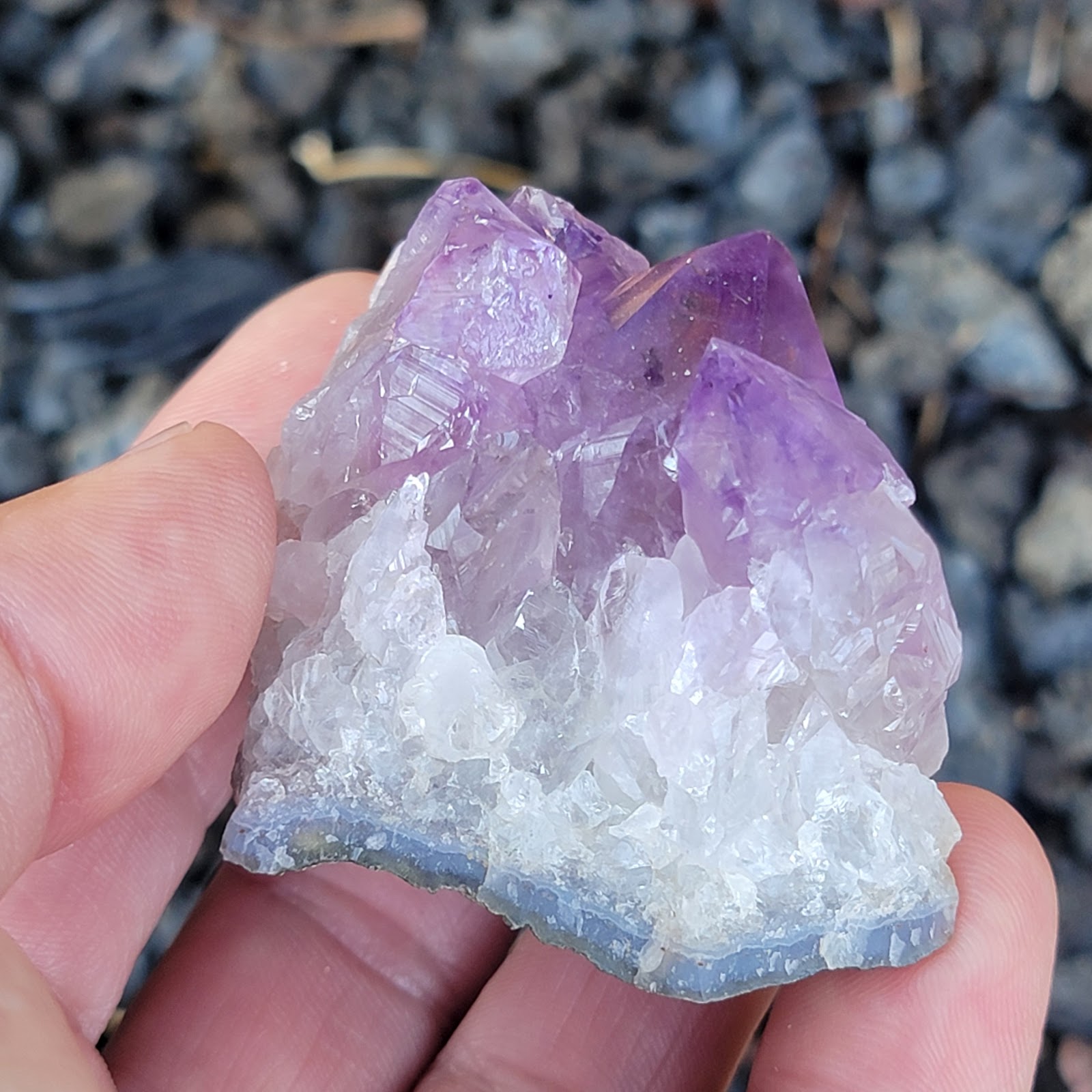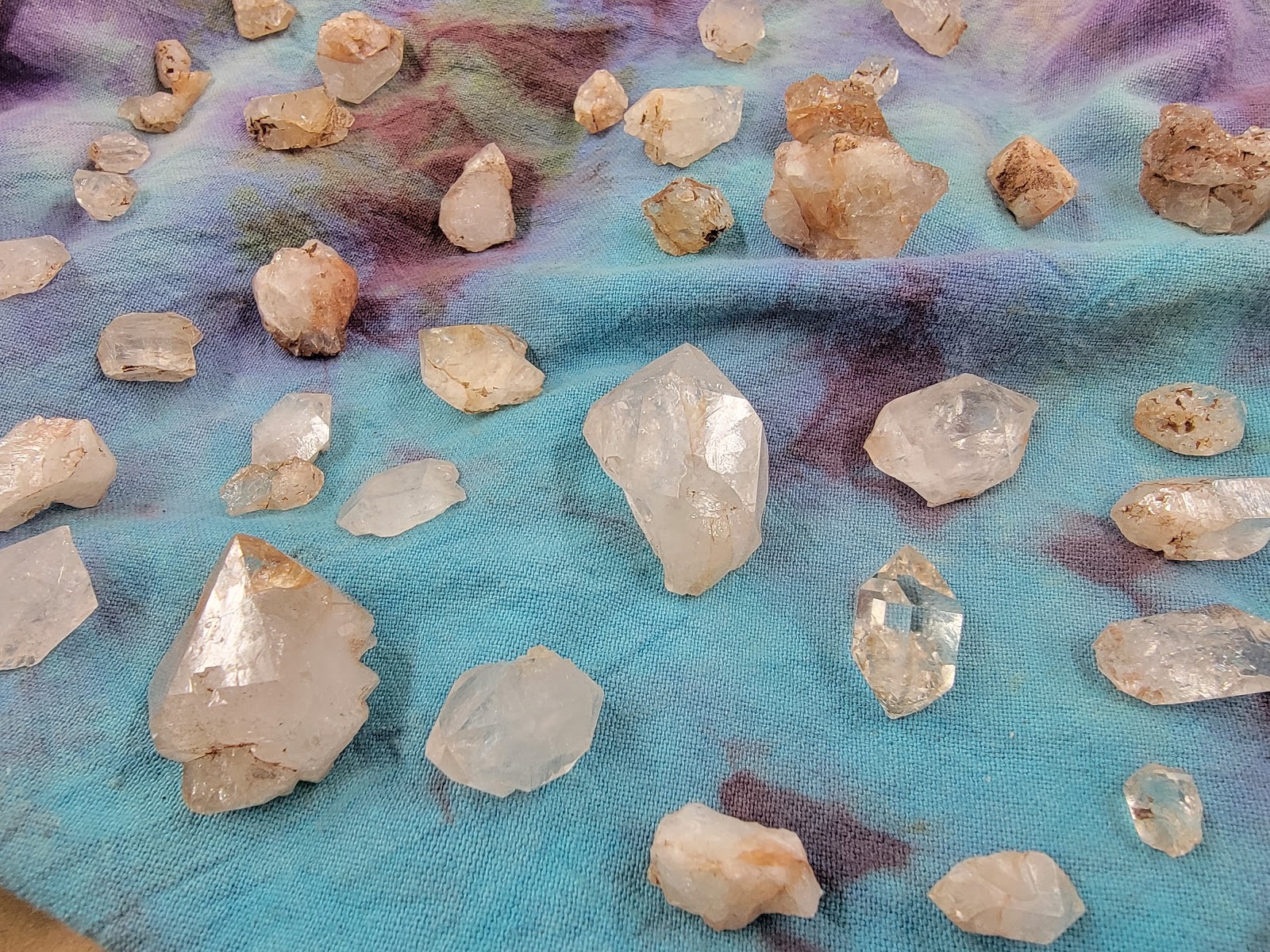Quartz is the mineral that seems to be everywhere.
There's quartz in your countertop, quartz on the beach, quartz in the landscaping at the grocery store, quartz in a big purple geode at the rock shop, and there might even be quartz in your watch.
Quartz is one of the most abundant minerals on planet Earth, and it can look very different, depending on the conditions present when it formed.
Variety of Quartz Crystals from Arizona
Why does some quartz form as beautiful pointed clear crystals, or colorful ones like amethyst, but other quartz forms as massive white blobs?
There are many things that go into the formation of minerals, but when it comes to the size of quartz, there are two main factors: space and cooling rate.
-Space: If a crystal doesn't have room to grow, it won't develop into a big handsome point. It will fill the space available, like a vein in a fracture of a rock.
-Cooling Rate: Quartz that cools slowly has time for the silicon and oxygen atoms to organize into large crystals, forming a perfect hexagon with a six sided point at one or both ends. Quartz that cools fast forms smaller less defined crystals.
As for color, it's the impurities, or different elements, that matter most. Super clear quartz that looks almost like glass is pure SiO2. Quartz that has a milky white color often has lots of tiny gas bubbles. Amethyst is purple because of iron impurities. Smokey quartz gets it's distinct look form aluminum, and rose quartz is usually colored by manganese or phosphorus. It's not always just one impurity that influences color.
When you find chalcedony, that's technically quartz too. The crystals are too small to see, even if you use a microscope. This means chalcedony is cryptocrystalline variety of quartz. Agate is a translucent form of chalcedony, often with beautiful bands.
What about Jasper? It is variety of quartz where the crystals are generally big enough to see with a microscope, but not with your eyes. This is called microcrystalline. Impurities again give it opaque red, yellow, or brown colors.
This is an overly simplified explanation of quartz, and mother nature is not simple. Many beautiful quartz specimens contain microcrystalline, cryptocrystalline, and large (macrocrystalline) crystals. Many impurities can make samples hard to identify.
The clear solution to help any rock enthusiast understand the many quartz varieties is to collect as many types as possible for comparison!
This post contains affiliate links, as most blog posts do, where the writer (me) earns a few cents from qualifying purchases.







No comments:
Post a Comment